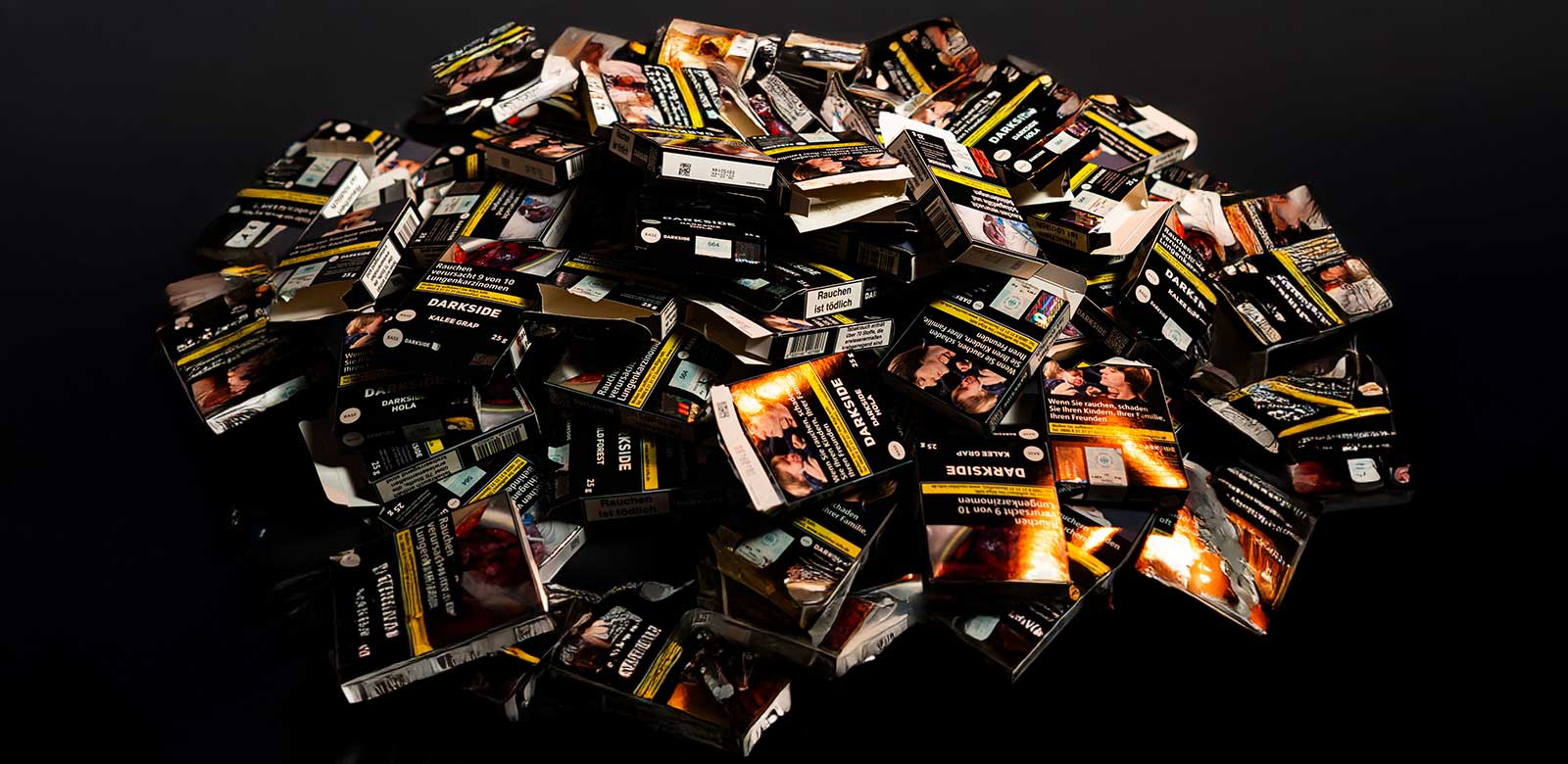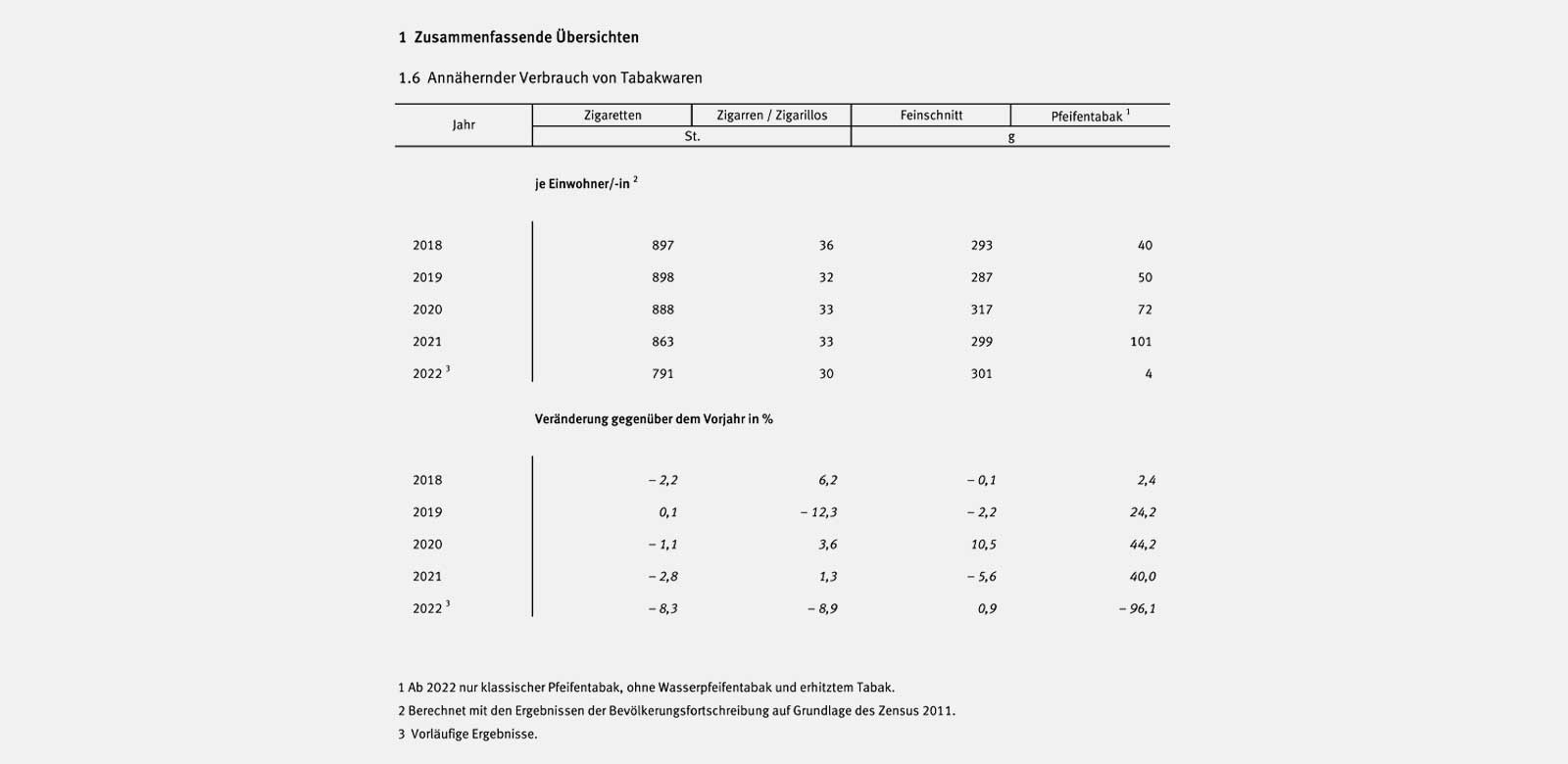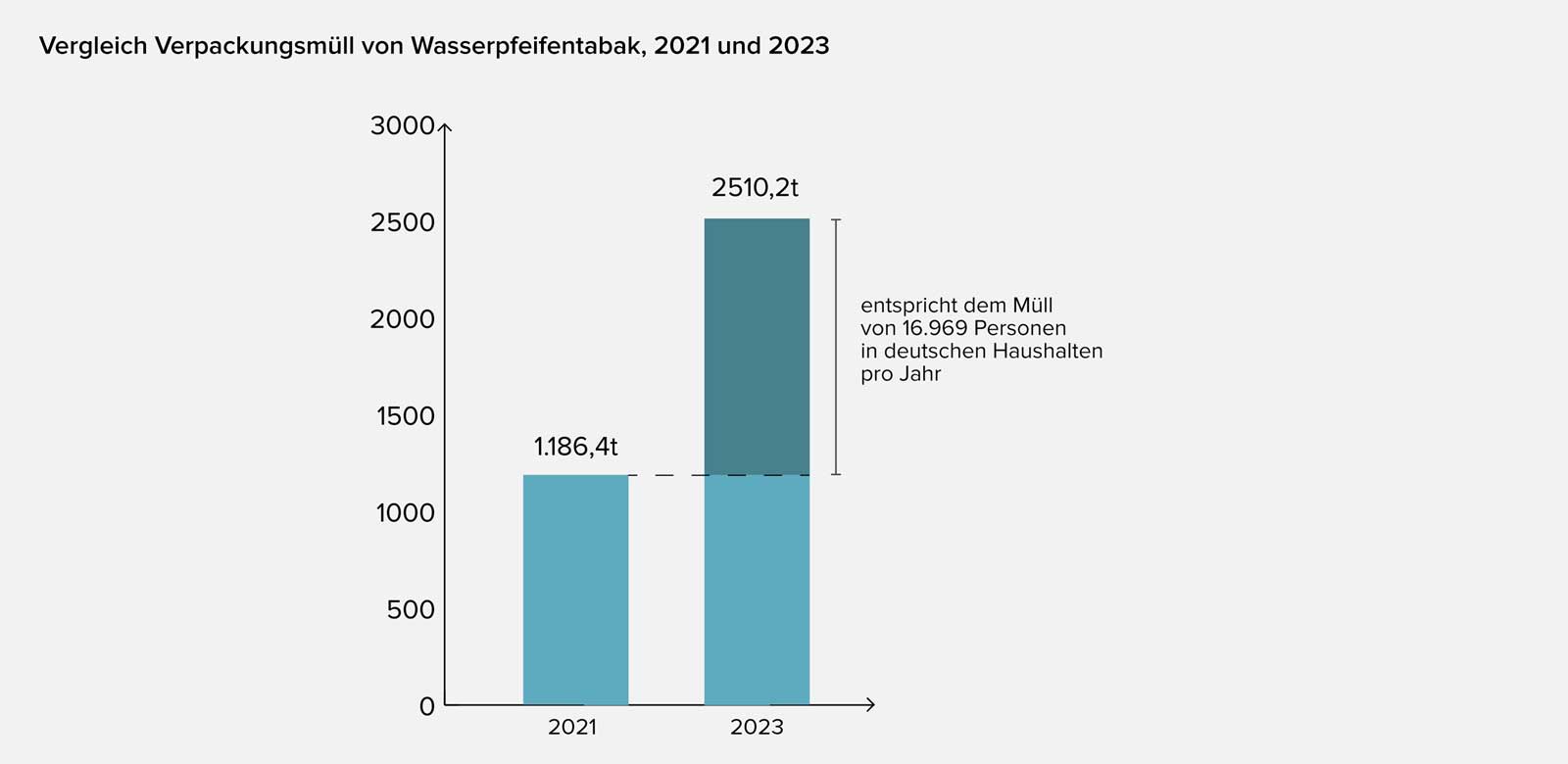-
Our offer is only for you if you are of legal age. Please confirm that you are at least 18 years old to proceed.
Our offer is only for you if you are of legal age. Please confirm that you are at least 18 years old to proceed.
Last updated on 24.05.2025 | Reading time approx. 04:42min

Pipe tobacco is the only type of tobacco that has shown consistent sales growth in recent years. This is evident from data by the Federal Statistical Office (www.destatis.de). The following chart, an excerpt from Fachserie 14 Reihe 9.1.1, shows the annual growth rates for this segment.

Annual growth rates for pipe tobacco, Fachserie 14 Reihe 0.1.1, Federal Statistical Office
The data also shows that these growth rates are largely attributable to hookah tobacco, which has been listed separately in statistics since 2022.
Until the end of 2021, tobacco manufacturers could still obtain tax stamps for packaging sizes over 25g. Production of such packages was allowed until mid-2022. Since July 2022, only packaging with a maximum of 25 grams is permitted.
The main reason for the law change was to prevent hookah bars from selling individual 20g servings taken from a 200g can, which is considered illegal. By law, tobacco must be sold as a complete package at the retail price printed on the tax stamp.
Therefore, only 20g or 25g packages are legal. However, most manufacturers did not offer such packaging, so bar owners opted for 200g or 1000g containers due to availability and cost. This prompted the law limiting pack sizes to a maximum of 25g.
Now, even private consumers have to buy 25g packs to enjoy hookah at home. This is not only inconvenient when preparing a hookah but also leads to a significant increase in packaging waste.
Most 25g tobacco packages are cardboard boxes wrapped in plastic, with an additional inner plastic pouch to keep the tobacco airtight. Some manufacturers have switched from large 200g tins to small plastic containers for the 25g format.
According to our data, the current distribution is about 75% cardboard box packaging and 25% plastic tins.
To assess the impact on packaging waste, we made the following assumptions:
We estimate that 2021’s hookah tobacco output was distributed as follows:
If replaced with 25g packaging, the same quantity would require 204,912,000 cans. We measured average weights of different containers to estimate the total packaging waste. Plastic 25g tins weigh about 22g each, and cardboard box + plastic pouch packages weigh about 9g (6g cardboard, 3g plastic).
Based on a 75/25 ratio of cardboard to plastic tins:
75% of 204,912,000 = 153,684,000 units/year
153,684,000 × 0.009kg = 1,383,156kg = 1,383.2t
Breakdown:
Cardboard: 153,684,000 × 0.006kg = 922.1t
Plastic: 153,684,000 × 0.003kg = 461.1t
25% of 204,912,000 = 51,228,000 units/year
51,228,000 × 0.022kg = 1,127,016kg = 1,127t
Total packaging waste: 2,510.2t
For 200g cans, many are hybrid cardboard-plastic and hard to separate for weighing. Therefore, we calculated total packaging waste without distinction:
Average weight per 200g can = 52.5g
21,003,480 × 0.0525kg = 1,102,683kg = 1,102.7t
Average weight per 1000g can = 148.5g
563,508 × 0.1485kg = 83.7t
Total old packaging waste: 1,186.4t
Comparing the two totals: 1,186.4t (200g & 1000g cans) vs. 2,510.2t (25g cans). The law change more than doubled the packaging waste from hookah tobacco.

Packaging waste comparison for hookah tobacco, 2021 and 2023
It is alarming that legislation was changed in a way that caused such a dramatic increase in packaging waste. The additional waste corresponds to the annual waste produced by 16,969 people in German households. (Source: DESTATIS)
